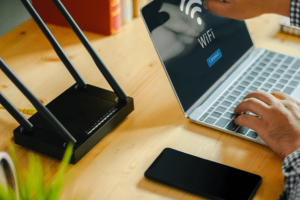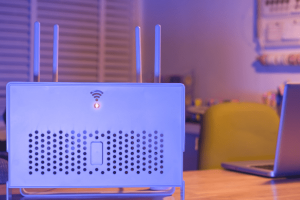Wi-Fi Design vs. Wi-Fi Setup: WhatEvery Business Should Know

Figure 1: Infographic: Key differences between Wi-Fi Design and Wi-Fi Setup for businesses.
For modern businesses, Wi-Fi is more than just internet access; it’s the backbone that keeps teams, tools, and customers connected. From cloud-based software and smooth video conferencing to seamless retail transactions, business Wi-Fi performance directly impacts productivity and customer satisfaction.
Yet, many organizations still assume that installing a few access points (APs) is enough. The truth is: without proper Wi-Fi design, setup alone often leads to costly issues like dead zones, interference, and unreliable performance.
Wi-Fi Design: The Blueprint for Success
Think of Wi-Fi design as the architectural plan for your network. Just as a building requires a blueprint before construction, business Wi-Fi design ensures your network can handle real-world demands from day one.
Key elements of Wi-Fi design include:
Site surveys & planning – analyzing building layout, wall materials, and interference sources.
- Capacity planning – accounting for expected users, devices, and bandwidth-heavy applications.
- Coverage mapping – designing for consistent, reliable Wi-Fi across every corner.
- Future-proofing – building scalability to support business growth and new technologies.
Wi-Fi Setup: Turning Design Into Reality
Setup is the execution phase, where your design comes to life. This involves:
- Hardware installation – deploying access points, switches, and controllers.
- Configuration – setting up VLANs, network policies, and security protocols.
- Optimization – fine-tuning channels, power levels, and load balancing.
- Validation – testing the network against design requirements.
When setup follows a solid design, businesses get Wi-Fi that is fast, reliable, and secure.
Why “Just Installing” Wi-Fi Fails Businesses
Skipping Wi-Fi design is one of the most common mistakes companies make. It often results in:
- Dead zones where staff or customers can’t connect.
- Interference issues from neighboring networks or devices.
- Overloaded APs in high-traffic areas, slowing down everyone.
- Security vulnerabilities that leave sensitive data exposed.
These issues not only frustrate employees and customers but also cost businesses time, money, and reputation.
The Role of Wi-Fi Site Planning
Professional Wi-Fi site planning ensures your network is tailored to your environment. This includes:
- Predictive heatmaps to visualize coverage before installation.
- On-site surveys to measure real-world signal strength.
- Application-aware design to prioritize business-critical traffic like VoIP or video conferencing.
These issues not only frustrate employees and customers but also cost businesses time, money, and reputation.
Conclusion
Reliable business Wi-Fi doesn’t happen by chance, it’s built through design-first planning and professional setup. While setup delivers the physical network, design ensures it’s optimized for performance, security, and growth.
At RINCS IT, we specialize in business Wi-Fi design, setup, and optimization for offices, retail, and enterprise environments. Our solutions eliminate dead zones, reduce interference, and create secure, future-ready networks.
Contact us today to discuss your Wi-Fi project and keep your business connected with reliable solutions.





